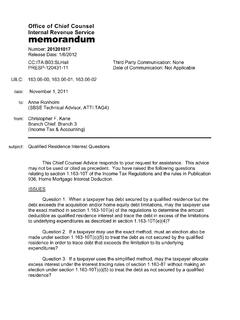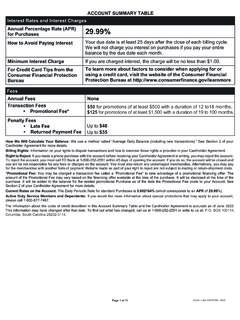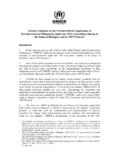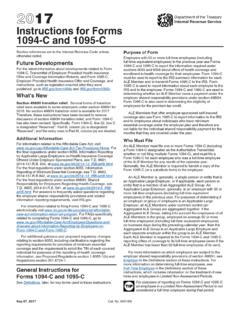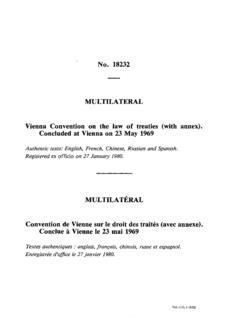Transcription of Questions and Answers on health-based exposure limits and ...
1 30 Churchill Place Canary Wharf London E14 5EU United Kingdom An agency of the European Union Telephone +44 (0)20 3660 6000 Facsimile +44 (0)20 3660 5555 Send a question via our website European Medicines Agency, 2018. Reproduction is authorised provided the source is acknowledged. 19 April 2018 EMA/CHMP/CVMP/SWP/246844/2018 Committee for Medicinal Products for Veterinary Use (CVMP) Committee for Medicinal Products for Human Use (CHMP) Questions and Answers on implementation of risk-based prevention of cross-contamination in production and Guideline on setting health-based exposure limits for use in risk identification in the manufacture of different medicinal products in shared facilities (EMA/CHMP/CVMP/SWP/169430/2012) Q1.
2 Are health-based exposure limits (HBELs) required for all medicinal products? A: Yes, HBELs should be established for all medicinal products. The toxicological or pharmacological data, on which the HBEL calculation relies, requires periodical re-assessment throughout a product s lifecycle. Q2. Is there a framework that could be used to define the significance of the health-based exposure Limit (HBEL) such that there can be broad guidance on the extent of Quality Risk Management (QRM) and control measures required? A: Firstly, it should be recognised that hazard varies on a continuum scale and that there are no firm cut off points, risk should be controlled on a proportionate basis. However, as a broad hypothetical model the following figure could be considered to show the increasing level of hazard (red being highest hazard) presented by products and there should be a commensurate increase in the level of control to prevent potential cross contamination in a shared facility.
3 Actual HBEL values should be used in QRM studies to determine the actual controls required. Diagram developed from an original concept published by ISPE. Source: ISPE Baseline Pharmaceutical Engineering Guide, Volume 7 Risk-Based Manufacture of Pharmaceutical Products, International Society for Pharmaceutical Engineering (ISPE), Second Edition, July 2017. Page 2/4 Q3. How should manufacturers use the HBELs? A: The role of HBELs in determining cleaning limits is explained in Q&A 6. However, the purpose of generating HBELs goes beyond justification of cleaning limits . Once the health-based assessment has been completed and the HBEL confirmed, these data should be used via a Quality Risk Management process to determine what controls need to be put in place and to assess if existing organisational and technical control measures are adequate or if they need to be supplemented.
4 This Quality Risk Management process should be carried out prospectively in the case of new equipment/facility to determine what control measures are required. It is expected that for products which present a higher potential harm to patients/animals, more elaborate organisational and technical control measures will be required. Using a structured Quality Risk Management process, manufacturers should consider the risks of cross contamination down to the established level from the HBEL. During the QRM study manufacturers should consider how easily such a quantity of contamination could occur, without detection, at batch and unit dose level. The level of detail in the QRM process should be commensurate with the potential harm as indicated by the HBEL and the suitability of control measures supported by practical and science-based evidence.
5 Manufacturers should be mindful that cross contamination controls implemented previously may not adequately assure control of the cross-contamination risk in the context of the HBEL approach. Additional observation of working practices, investigation and analysis may be required to provide full practical confidence in the effectiveness of controls. Where control measures cannot adequately assure that the potential contamination is consistently controlled to a level below that of the HBEL then the products concerned should be manufactured in dedicated facilities. Q4. What competencies are required for the person developing the health-based exposure limits (HBEL)? A: health-based exposure limits should be determined by a person who has adequate expertise and experience in toxicology/pharmacology, familiarity with pharmaceuticals as well as experience in the determination of health-based exposure limits such as Occupational exposure Levels (OEL) or Permitted Daily exposure (PDE).
6 Where experts are contracted to provide the HBEL, contractual agreements in compliance with Chapter 7 requirements should be in place prior to work being conducted. It is not considered acceptable for manufacturers to purchase HBEL assessments without recording an assessment of the suitability of the provider (including the specific technical expert) as a qualified contractor. Q5. What responsibility do contract givers have to contract manufacturers in relation to data to support a HBEL assessment? A: Contract givers should either provide a full HBEL assessment to contract manufacturers or provide the data to allow the contract manufacturer to conduct the HBEL assessment. In either case the HBEL assessment, including data references and relevant experts should be available on request during inspection of the manufacturer.
7 Page 3/4 Q6. How can limits for cleaning purposes be established? A: Although the EMA guideline (EMA/CHMP/CVMP/SWP/169430/2012) may be used to justify cleaning limits (as per Introduction paragraph 3), it is not intended to be used to set cleaning limits at the level of the calculated HBEL. For existing products, manufacturer s historically used cleaning limits should be retained and can be considered alert limits provided that when taking cleaning process capability into account , they provide sufficient assurance that excursions above the HBEL will be prevented. A similar process should be adopted when establishing cleaning alert levels for products introduced into a facility for the first-time. Results above the alert cleaning limit should trigger an investigation and, where appropriate, corrective action to bring the cleaning process performance within the alert cleaning limits .
8 Repeated excursions above the alert cleaning limit will not be considered acceptable where these indicate that the cleaning method is not in control. Recognised appropriate statistical methods may be used to determine whether the cleaning process is in control or not. Q7. Is analytical testing required at product changeover, on equipment in shared facilities, following completion of cleaning validation? A: Analytical testing is expected at each changeover unless justified otherwise via a robust, documented Quality Risk Management (QRM) process. The QRM process should consider, at a minimum, each of the following: the repeatability of the cleaning process (manual cleaning is generally less repeatable than automated cleaning); the hazard posed by the product; whether visual inspection can be relied upon to determine the cleanliness of the equipment at the residue limit justified by the HBEL.
9 Q8. What are the requirements for conducting visual inspection as per Q&A 7? A. When applying visual inspection to determine cleanliness of equipment, manufacturers should establish the threshold at which the product is readily visible as a residue. This should also take into account the ability to visually inspect the equipment, for example, under the lighting conditions and distances observed in the field. Visual inspection should include all product contact surfaces where contamination may be held, including those that require dismantling of equipment to gain access for inspection and/or by use of tools (for example mirror, light source, boroscope) to access areas not otherwise visible. Non-product contact surfaces that may retain product that could be dislodged or transferred into future batches should be included in the visual inspection.
10 Written instructions specifying all areas requiring visual inspection should be in place and records should clearly confirm that all inspections are completed. Operators performing visual inspection require specific training in the process including periodic eye sight testing. Their competency should be proven through a practical assessment. Page 4/4 Q9. Is it acceptable to simply segregate products of a common therapeutic classification in a dedicated area as a means of controlling risk of cross contamination? A: Manufacturers cannot just segregate common products from other product types as a means of dealing with the risk to patient and animal safety. Although this may prevent contamination of other product classes it does not address the possibility for cross contamination within product classes.










